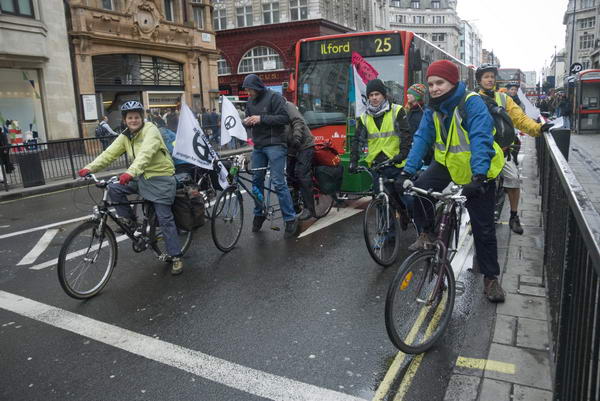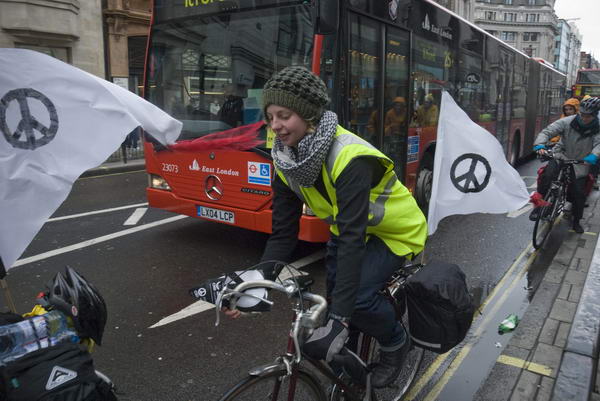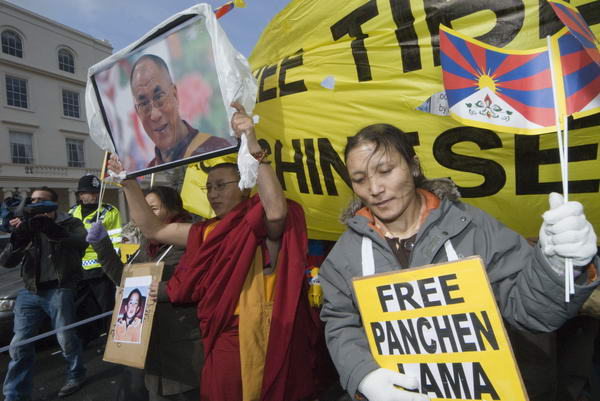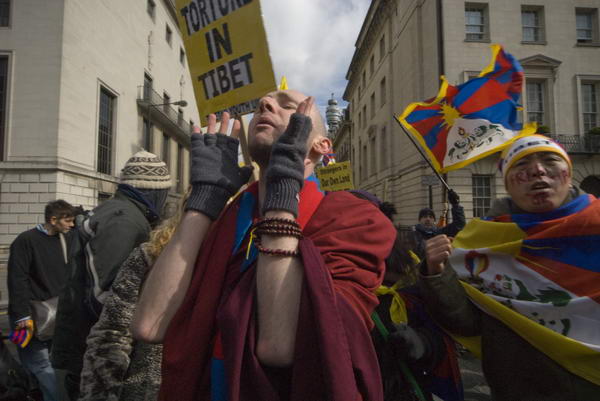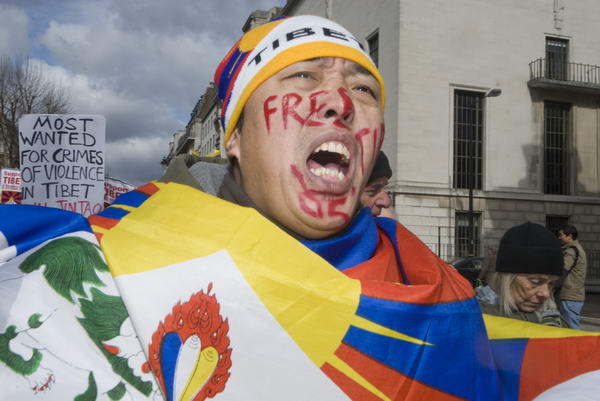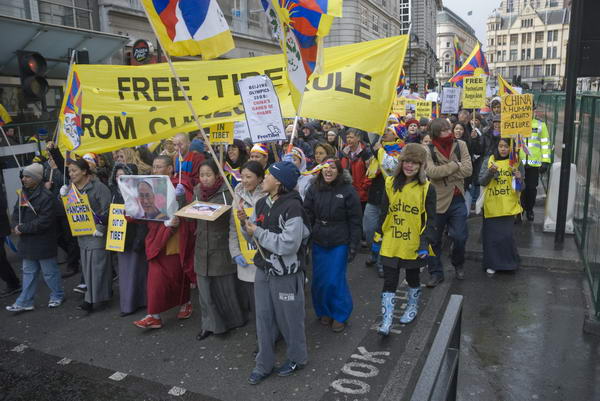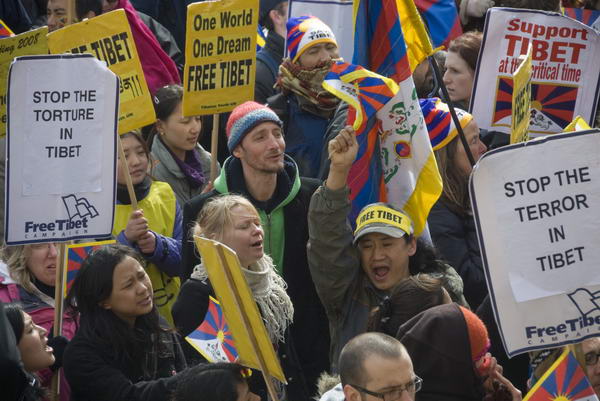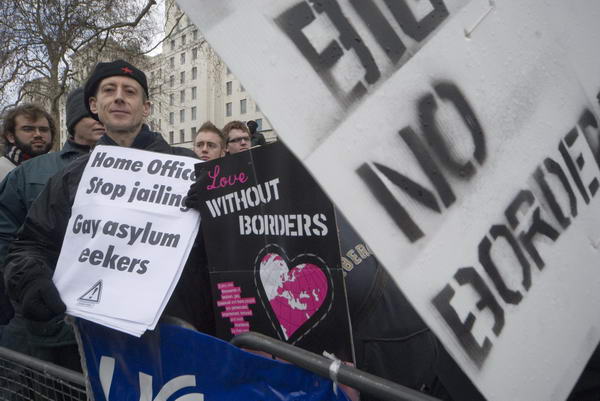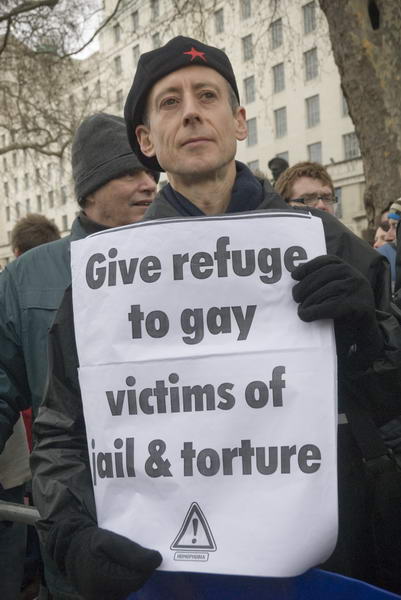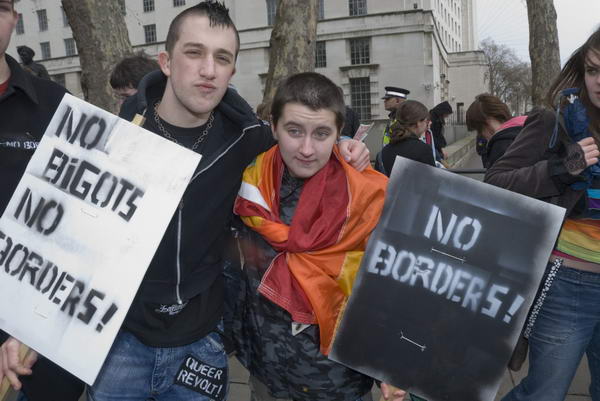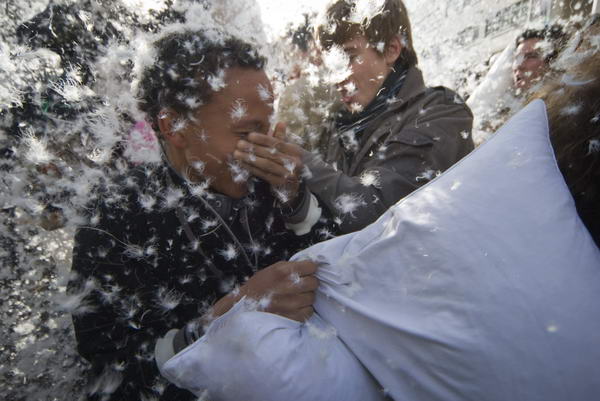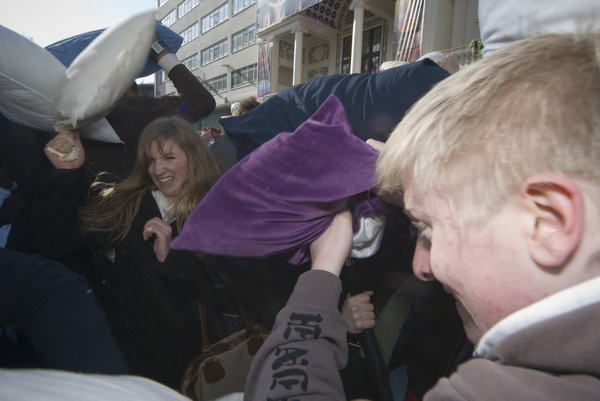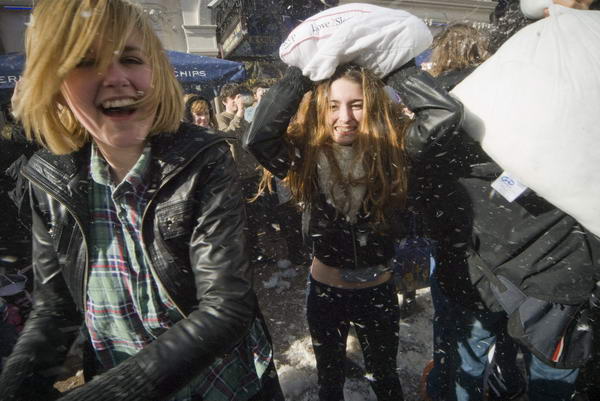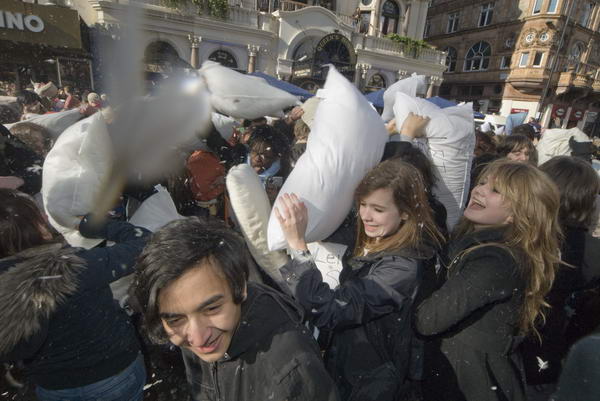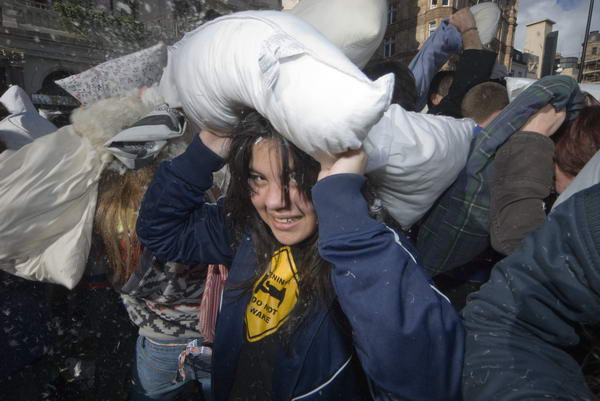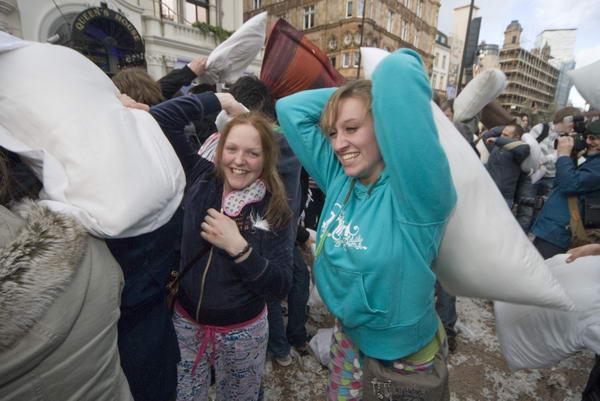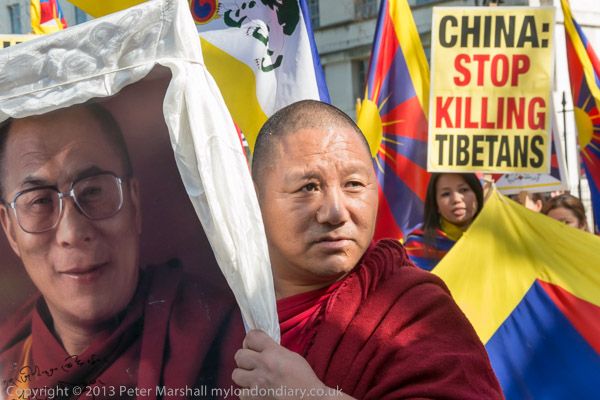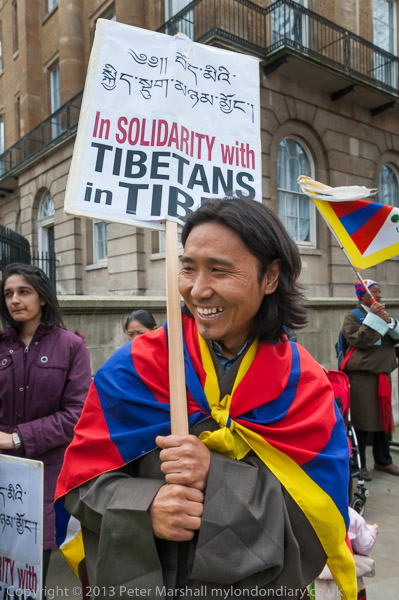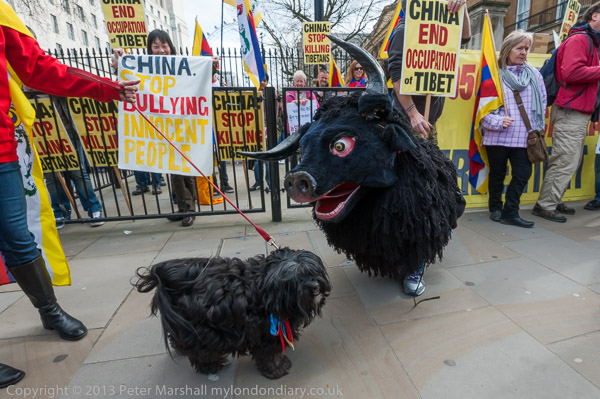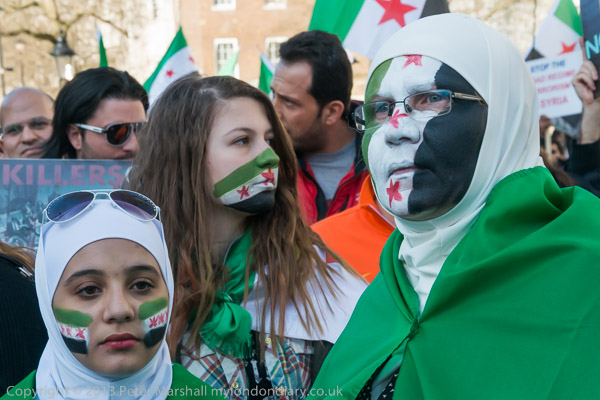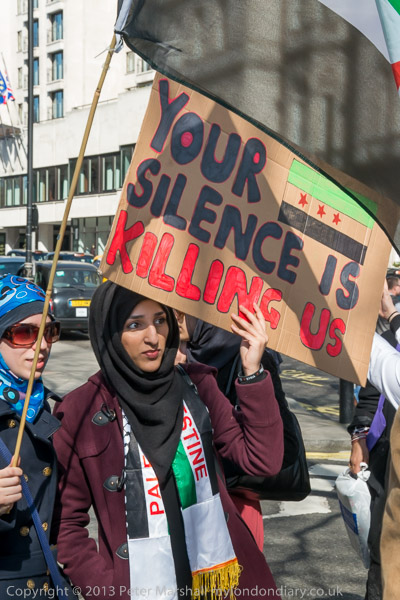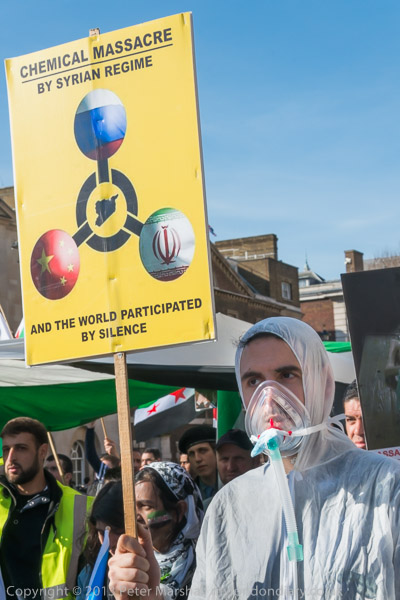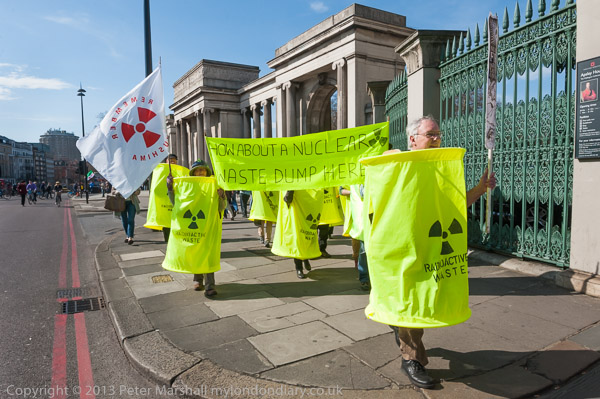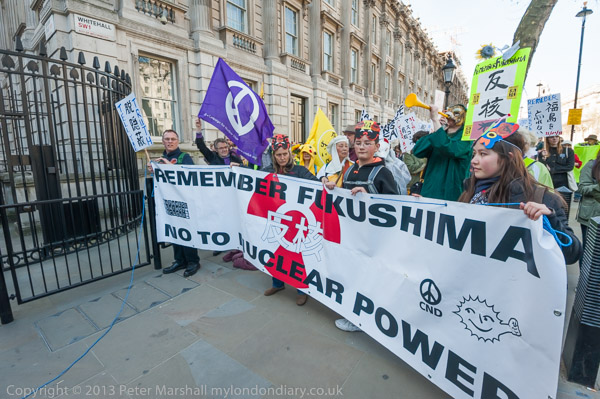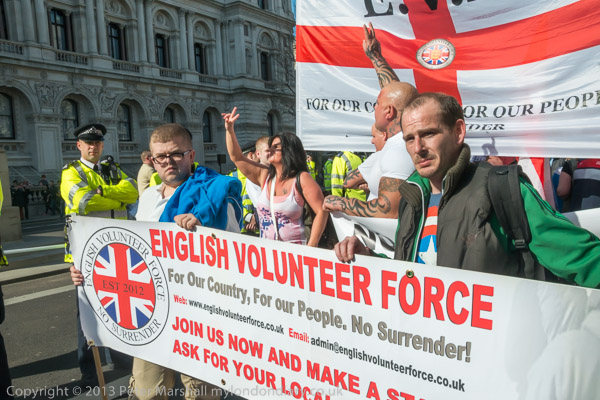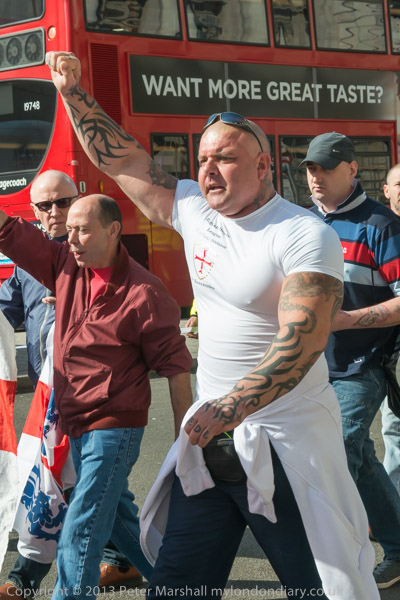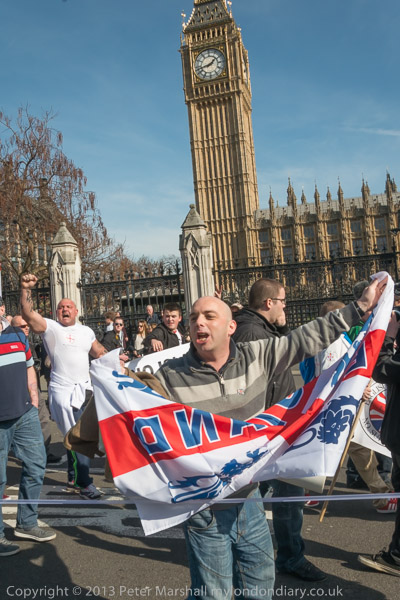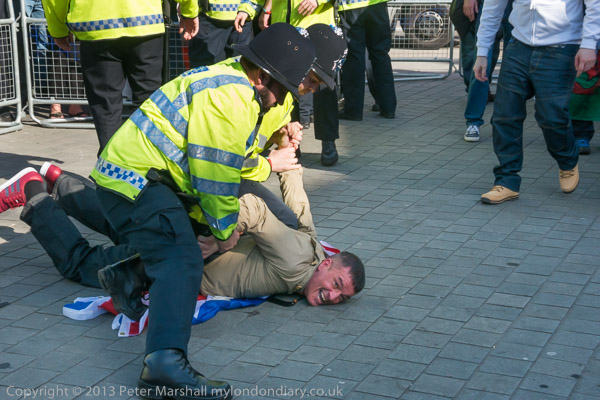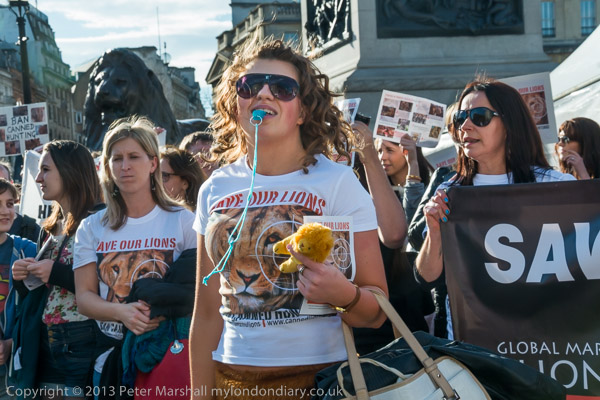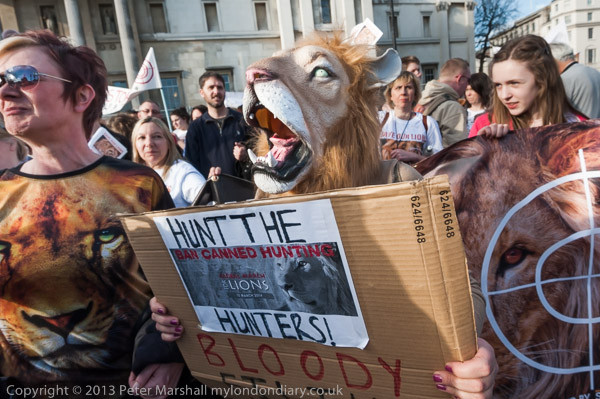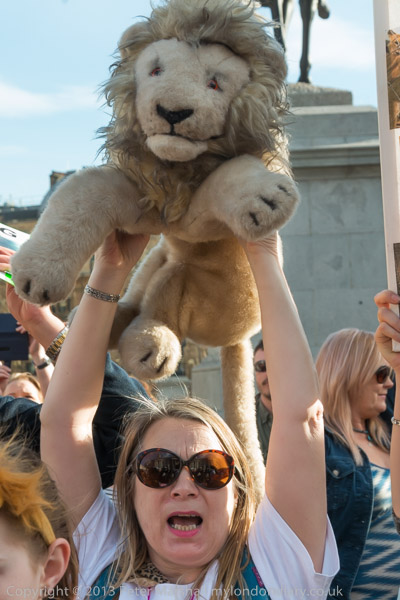Union Busting, Tibet, Women & Sharia: My work on Saturday 7th March began outside fashion store Prada in Mayfair. I moved on to the Chinese Embassy for the annual Tibet Freedom March, then to Portman Square for a International Women’s Day march and finally to Trafalgar Square where ‘One Law for All’ were marching to a public meeting against the use of Sharia and other faith-based laws in the UK.
Union Busting – Just SO Last Season – Prada, Old Bond St

A dozen people from Labour Behind the Label, part of the international ‘Clean Clothes Campaign’ which campaigns in support of garment workers worldwide were protesting outside Prada, one of the best-known luxury brands around the world.
The ridiculously expensive fashion luxury goods its customers buy are not made in Milan where Prada was founding but in factories such as the DESA factory in Turkey. Workers there are on ridiculously low pay and work long shifts – sometimes up to 40 hours.
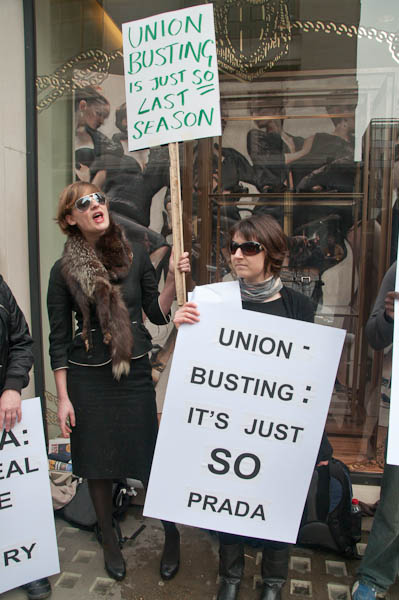
When in April 2008 workers at DESA decided to join the Turkish leather workers union, 44 were sacked and 50 forced to resign from the union.
Demonstrations outside the DESA factory have led to repression and arrests and when one union leader refused to accept a bribe, her family was threatened, and later that day men on a motorbike attempted to kidnap her 11 year old daughter.

Prada wasn’t the only luxury goods seller profiting from this despicable exploitation – the DESA factory in the Dzce Industrial Zone also makes goods for Mulberry, Louis Vuitton, Samsonite, Aspinal of London, Nicole Farhi and Luella.
As well as publishing more about the protest – and of course more pictures, my London Diary post also pointed out that it isn’t just the high price designer labels that support sweatshops, but also Matalan and other cheap suppliers and supermarkets – and urged readers to visit the Labour Behind the Label web site to find out more and support their actions.
Union Busting – Just SO Last Season
Tibet Freedom March – 50 Years – Chinese Embassy
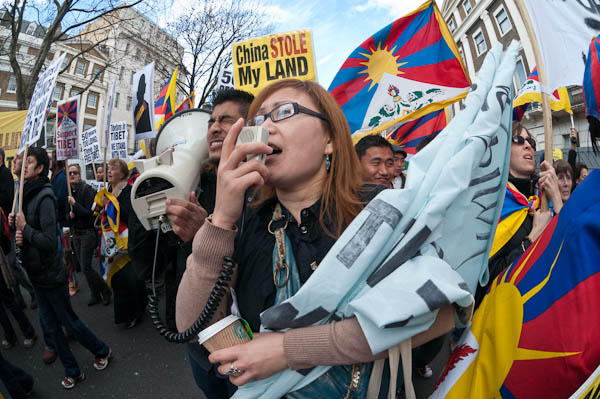
The march marked the 50th anniversary of the brutal repression by China of the ‘Tibetan People’s Uprising‘, when over 80,000 Tibetans were killed and many others jailed.

It was then the Dalai Lama fled the country along with many others. Those still in Tibet still suffer the same kind of brutal repression, with thousands missing after the demonstrations in Tibet in 2008, and hundreds serving lengthy prison sentences.
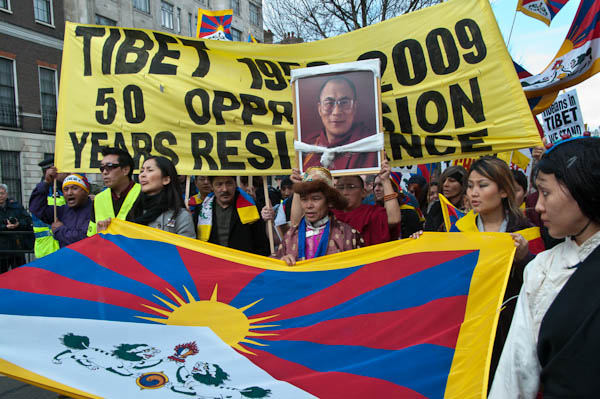
Many on the protest carried Tibetan flags. Two months earlier a young Tibetan, Pema Tsepak, had been beaten to death for carrying one in his own town in Tibet.
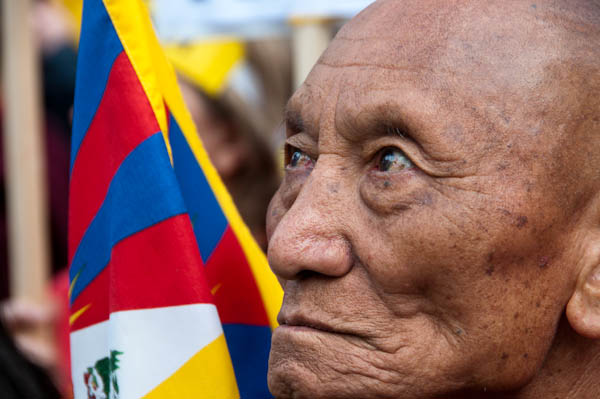
At the start of the march opposite the Chinese Embassy, Palden Gyatso, a Tibetan monk who spent 33 years in prison and labour camps from 1959 to 1992 and was permanently damaged by the beatings and inhumane torture he suffered tried to deliver a letter to the Chinese Embassy but the Embassy was not accepting any post.
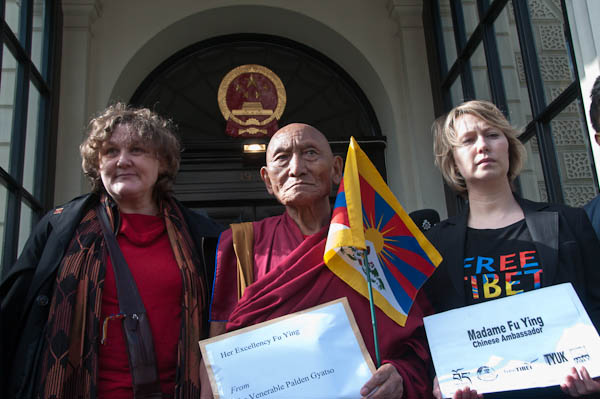
Gyatso’s autobiography was the basis for the film, ‘Fire Under the Snow‘ – you can watch a trailer on YouTube.

I left the march when it reached Oxford Street to go to the International Women’s Day march.
Tibet Freedom March – 50 Years
Million Women Rise 2009 – Portman Square, Oxford St

The main celebration of International Women’s Day in London in 2009 was the ‘Million Women Rise 2009‘, a women-only march to end male violence against women.

This annual march since it started the previous year coincided with the global United Nation theme for 2009 which was ‘Women and men united to end violence against women and girls‘, but Million Women Rise is a women-only march.

This year the numbers seemed rather smaller, despite the predictions of a much larger event, but it was still a lively event and one that made a greater impact with its route through London’s major shopping streets – Oxford Street and Regent Street and across Piccadilly Circus to a rally in Waterloo Place.

As they marched the women chanted their main message: “However we dress, wherever we go, yes means yes, no means no!” and called for an end to male violence against women.
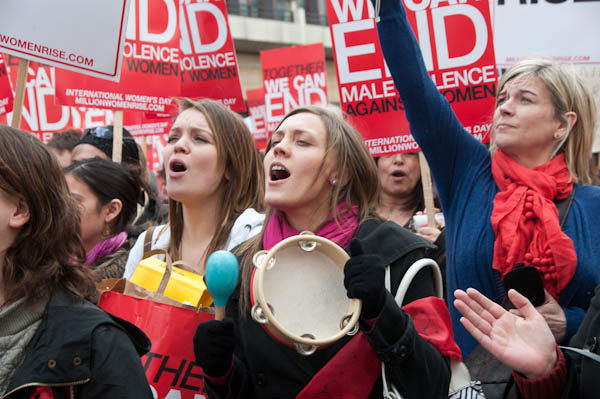
This was a national march with coaches bringing women from Birmingham, Bradford, Hebden Bridge, Wales, Nottingham and Todmorden as well as other groups coming from around the country. There was also a strong participation by Kurdish and Turkish groups based in London.

One group marched behind the main march, choosing to follow the UN theme rather than be a women-only march; “the European Confederation of Workers from Turkey (ATIK) Women’s Commission group included men marching (as their placards proclaimed in Turkish) in a spirit of socialist equality, fraternity and freedom.”
One Law For All – No Sharia Law in Britain – Trafalgar Square
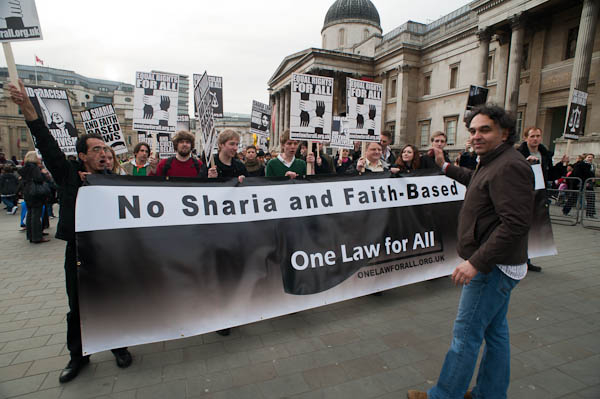
The One Law for All campaign had been launched three months earlier on Human Rights Day by prominent civil rights activists, lawyers, feminists and academics as well as the National Secular Society.
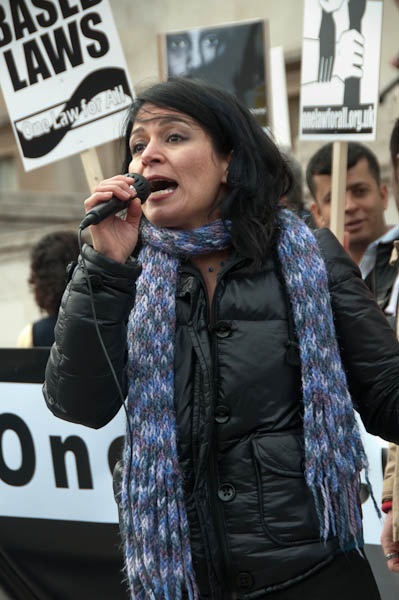
Among those supporting it were many who had previously lived under Sharia, including both Muslims and ex-Muslims, some who had fled their home countries to claim asylum after persecution for political activities including the refusal to adhere to religious dictats.

The organisation objects to the setting up of Sharia courts in the UK, on the grounds that Sharia law is discriminatory and unjust, particularly against women and children. While supporters of religious courts see these as promoting minority rights and social cohesion they see them as a cheap short cut to injustice and call for one secular law to govern all of us.

After an hour of speeches One Law for All Spokesperson Maryam Namazie made a final address before the roughly 250 people present marched to a public meeting at Conway Hall. But I left for home instead.
One Law For All – No Sharia in Britain
Flickr – Facebook – My London Diary – Hull Photos – Lea Valley – Paris
London’s Industrial Heritage – London Photos
All photographs on this page are copyright © Peter Marshall.
Contact me to buy prints or licence to reproduce.
